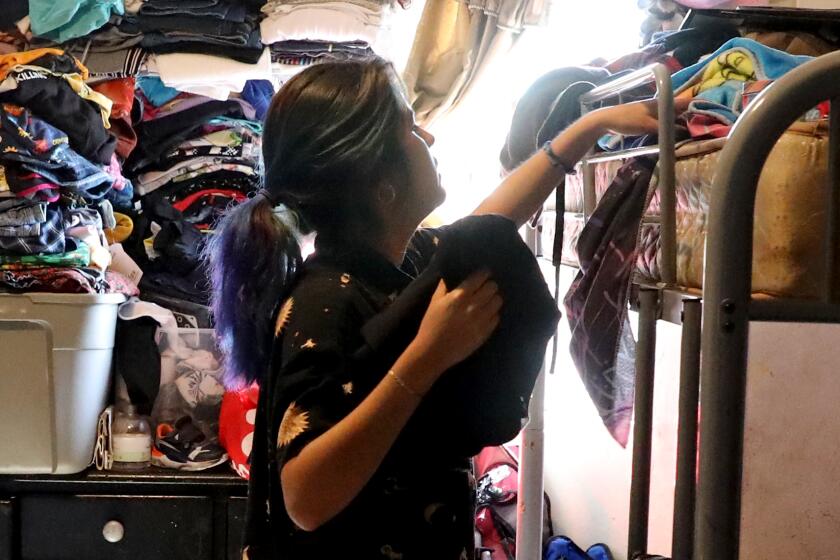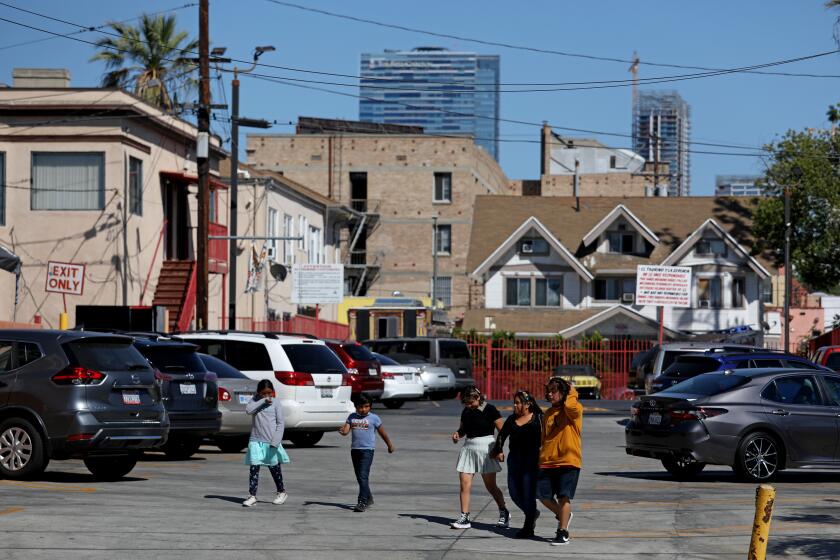
- Share via
Our story on overcrowded housing involved dozens of interviews and visits to tightly packed apartments where COVID-19 ran rampant. We pored over historical books, scholarly journals, oral histories, census and public health data, archival city records and newspaper clippings.
In addition to the people struggling with overcrowding who are documented in the story, we want to give credit to the historians and researchers who were gracious enough to share their time and expertise.
For an overall look at overcrowded housing, we conducted several interviews with Dowell Myers, a professor of policy, planning and demography at USC and one of the preeminent experts on this topic.
More homes are overcrowded in L.A. than in any other large U.S. county, a Times analysis of census data found — a situation that has endured for three decades.
To study the intersection of COVID-19 and overcrowding, we interviewed, among others, Paul Ong, a professor emeritus of urban planning at UCLA; Jarvis Chen, a social epidemiologist at Harvard; Steve Graves, an economics professor at Cal State Northridge; and Dr. David Eisenman, a professor at the UCLA Fielding School of Public Health. Claudia Solari, a senior research associate with the Urban Institute, spoke about the non-COVID effects of overcrowding. And James Rojas, an urban planner, described the issues specifically facing Latinos.
William Deverell, a historian at USC, offered his insight into how Los Angeles developed from its frontier days. Manuel Pastor, director of USC’s Equity Research Institute; Natalia Molina, a USC historian; and Fernando Guerra, director of the Thomas and Dorothy Leavey Center for the Study of Los Angeles at Loyola Marymount, discussed the history of Latinos in the region.
That history was fleshed out with help from dozens of books and articles, including Mark Wild’s “Street Meeting,” Robert M. Fogelson’s “The Fragmented Metropolis,” Carey McWilliams’ “Southern California” and Tom Zimmerman’s “Paradise Promoted.”
Molina’s “Fit to Be Citizens?” describes the racial implications of the tuberculosis outbreaks of the 1920s, as do Emily K. Abel’s “Tuberculosis & the Politics of Exclusion,” Stephanie Lewthwaite’s “Race, Place and Reform in Mexican Los Angeles” and Dana Cuff’s “The Provisional City.” We also consulted contemporaneous scholarly works, mainly from sociological researchers at USC.
In researching the deportation and coerced emigration campaign of the 1930s, we relied on Francisco E. Balderrama and Raymond Rodríguez’s book “Decade of Betrayal” and conducted interviews with Balderrama. Oral history interviews conducted by Christine Valenciana, an associate professor at Cal State Fullerton, illuminated the personal stories of those who were expelled from the U.S.
Don Parson’s “Making a Better World” and Eric Nusbaum’s “Stealing Home” documented the Chavez Ravine saga. We also interviewed Priscilla Leiva, an assistant professor of Chicana/o and Latina/o Studies at Loyola Marymount, who has extensively researched the history of those neighborhoods.
The denser homebuilding and increased public support for low-income tenants needed to fix L.A.’s housing crisis are also needed to solve overcrowding, experts say.
Greg Morrow’s “The Homeowner Revolution” provided a helpful window into the “slow growth” movement of the 1970s.
The socioeconomic landscape of L.A. housing in the late 20th century was expounded upon in William Fulton’s “The Reluctant Metropolis,” Ivan Light’s “Deflecting Immigration,” Jacob Wegmann’s “We Just Built It” and Mike Davis’ “The L.A. Inferno.”
While not every historian and researcher we interviewed made it into the report, their expertise was invaluable in better understanding the issue of overcrowding in Los Angeles.
More to Read
Sign up for Essential California
The most important California stories and recommendations in your inbox every morning.
You may occasionally receive promotional content from the Los Angeles Times.














